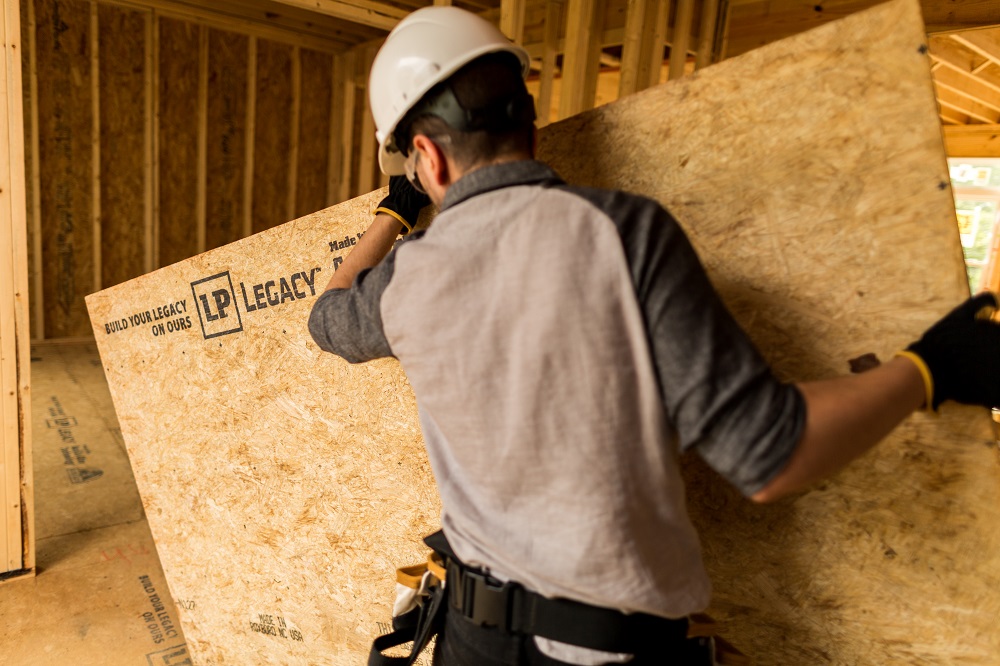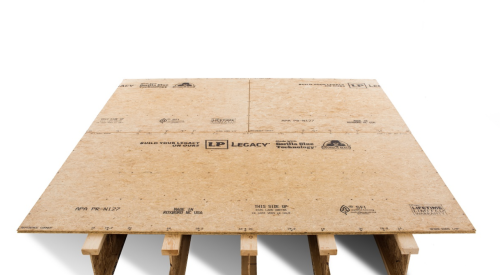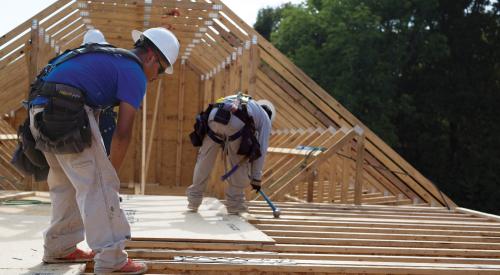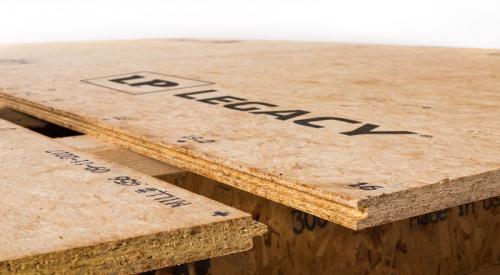How often do you consider the stamps and labels on your OSB materials? Choosing an OSB flooring panel that has undergone third-party testing helps ensure you’re choosing a product suitable for each application. LP Legacy® panels are not only evaluated by APA – The Engineered Wood Association, but also have undergone additional testing above and beyond the norm.
“Manufacturers whose products have undergone third-party testing are authorized to place certain trademarks on their products. For example, APA authorizes its member mills to place particular trademarks on their products signifying that those products have met voluntary industry-wide product standards relating to coloring classifications, test procedures and performance requirements, says Kurt Bigbee, senior scientist at APA. APA applies industry-wide voluntary product standards that define flooring classifications, test procedures, and performance requirements.
“The standards were developed based on the history of light-frame construction loads and have been reviewed and approved for decades by code officials, consumer representatives, manufacturers, and certification organizations,” Bigbee says. “The testing provides evidence that structural panels will perform well in typical residential and commercial structures.”
According to Bigbee, the standards that apply to wood structural panels in the U.S. are PS 1 for plywood only and PS 2 for plywood and OSB. APA’s product standards fall into two primary structural panel classifications:Sheathing and Single Floor.LP Legacy premium floor panels fall under the classification of Single Floor.
“Tests and requirements are linked to real-world buildings, where the typical loads and moisture exposure are realized,” Bigbee notes. “The other important aspect is that the certification body has a strong quality system of mill and product auditing and third-party verification.”
Sheathing spans typically carry a marking of 24/16, 32/16, 40/20, and 48/24. The first number shows the maximum roof span (in inches); the second shows the maximum subfloor span. Where a single layer floor panel is desired, Single Floor is the appropriate classification, with typical maximum Single Floor spans of 20oc (on center), 24oc, 32oc, and 48oc.
According to Bigbee, APA’s product testing evaluates Sheathing and Single Floor panels based on five types of typical performance attributes.
- “Concentrated loads” simulate people walking on floors, furniture, etc. APA tests this by applying load through steel discs (large discs simulating people walking on floors and small discs representing loads such as a piano or water heater), impact bag drops (simulating someone dropping a heavy load), and successive drops followed by proof load.
- “Uniform loads” test how the structure will perform under things like floor coverings, people, and furniture. A vacuum box applies negative pressure to the underside of the panel to test whether the panel meets displacement and ultimate load requirements.
- “Fastener holding”means pulling out a nail to test lateral and withdrawal load.
- “Linear expansion” helps determine how much a panel expands lengthwise with exposure to moisture. APA puts samples through a cycle of dry and wet conditions.
- “Bond performance” determines if the sheathing’s adhesives and curing can withstand moisture exposure. Panels are exposed to moisture, dried in the oven, and then tested in bending to determine a strength capacity.
“Sub-floor panels typically have lower concentrated load requirements than Single Floor grades for the same span,” Bigbee says. “Both Sub-floor and Single Floor panel shave increased concentrated load requirements for longer spans. Deflection under uniform load is unique for each span, while the ultimate load requirements are the same for most spans. Nail withdrawal is specific to panel thickness and application. Linear expansion is the same for all panels. Bond performance levels are specific to each span.”
In addition, some OSB panels, including LP Legacy® premium sub-flooring, carry a “Structural I” upgrade designation. STRUC-I panels must conform to higher across-panel performance requirements and will undergo additional qualification tests for concentrated and uniform load and wall racking performance
Builders can identify OSB panels that have undergone APA’s testing by the signature APA stamp on the panel face. Among the information available on the stamp are the product standard it meets, its panel grade, its span rating, and its exposure rating, among others.
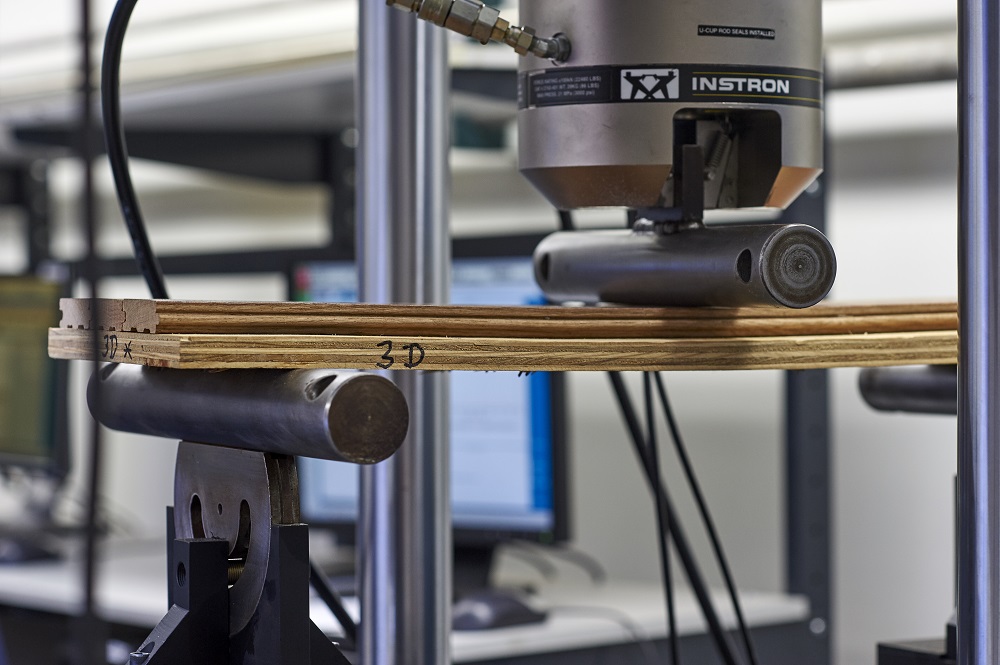
You’ll find the label on LP Legacy sub-flooring panels, which undergo voluntary industry product standard testing and also carry a STRUC-I designation. In addition, LP has put LP Legacy panels through numerous additional tests, including four-phase testing over seven months at the University of Maine’s Advanced Structures and Composites Center. LP also created a range of “extreme testing” protocols that really pushed the panels to the limit, including sending panels over a raging waterfall and leaving them to soak and using panels as walls in a shark cage.
In each test, LP Legacy panels lived up to their name, delivering superior moisture resistance and unmatched durability. Made with Gorilla Glue Technology®, LP Legacy sub-flooring is one of the stiffest and strongest in its class. The panel’s stiffness makes it ideal for hardwood flooring and tile applications, and high panel density provides exceptional fastener holding strength and a quieter floor. And with superior moisture resistance, LP Legacy sub-floor panels carry a Covered Until It’s Covered® no-sand warranty.
